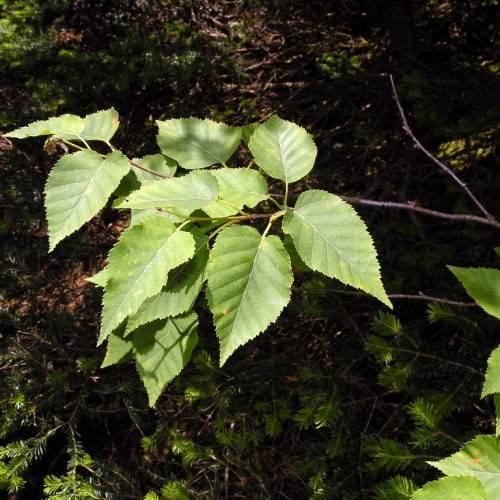
Heartleaf Birch
Betula cordifolia
Also Known As - Mountain White Birch,Eastern Paper BirchWatering:
Frequent
Hardiness Zone:
Sun:
full sun,part shade
Leaf:
Yes
Growth Rate:
Low
Poisonous To Humans:
Yes
Poisonous To Pets:
Yes
Salt Tolerant:
Yes
Invasive:
Yes
Care Level:
Medium
watering
Cut-Leaved Water-Parsnip should be watered once every 5-7 days, depending on the soil and environmental conditions. Water should be applied in the morning, when temperatures are cooler and light levels are lower, and the water should be applied slowly and deeply at the base of the plant. Avoid wetting the foliage, as this can lead to fungal disease. In areas with very hot summers, Water-Parsnip may need an extra drink of water every 3-4 days. Water until the soil is completely saturated, but avoid overwatering.
sunlight
The Cut-Leaved Water-Parsnip (Berula incisa) requires approximately 4-10 hours of direct sunlight a day. It prefers to be in full sun but will tolerate some shade, and it is best to be planted somewhere that will provide full morning sun and partial afternoon shade. The ideal temperatures for Cut-Leaved Water-Parsnip are between 65 and 75 degrees Fahrenheit. Too much heat will cause the plant to wilt and become stressed, so if the temperatures are warm it is best to provide some shade or move the plant to a cooler location. For optimal growth, the Cut-Leaved Water-Parsnip should receive plenty of sunlight throughout the day.
pruning
The best time to prune a Cut-Leaved Water-Parsnip is in late winter or early spring before new growth begins. Be sure to remove any dead, damaged, or overcrowded stems near the base of the plant, as this can help ensure healthy air circulation and good drainage. Prune back some of the stems to about 6 inches tall. This will encourage new growth and improve the outlook of the plant. When pruning, use sharp tools and make sure to clean them after each use to avoid spreading diseases. Be careful not to overprune, as this can cause shock and damage the plant.
